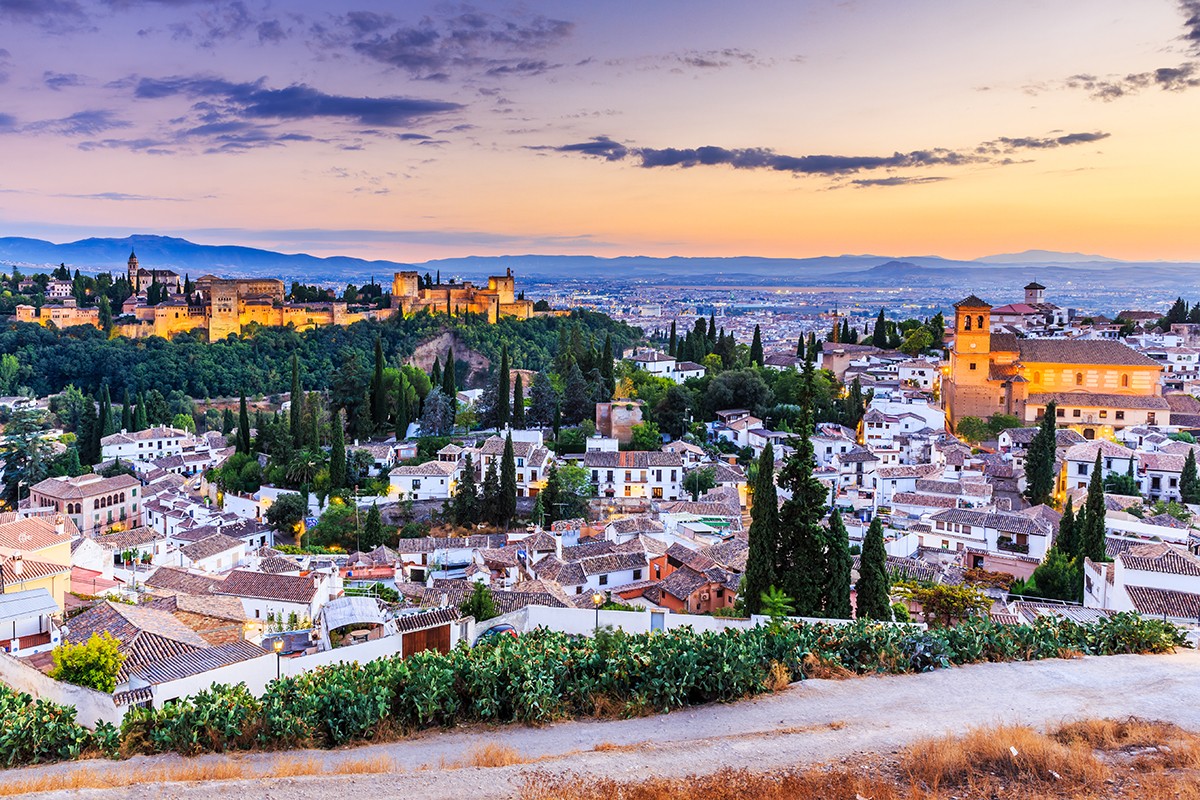Spain in winter? You might think that it doesn’t sound quite right. Spain’s one of the world’s most popular destinations, but most people consider it solely a summertime place. It’s a country with beautiful beaches and a laid back culture, but holidays should only take place there from May to September, right?
Wrong. Spain in winter is a great idea. The country has ski slopes – they aren’t as big as those found in the Alps, but they’re certainly ski-able, and there are even some locations where you can enjoy the snowy mountains and temperatures in the mid to late teens in the same day.
There are also relatively warm places in Spain in winter – especially along the south coast and the islands. The Baleriac Islands (Ibiza, Menorca, Majorca) are about the same temperature as mainland Spain during winter, but the Canary Islands, off the coast of Africa, have year-round warm temperatures.
Another perk to Spain in winter? No crowds! The country gets very busy during the summer tourism season, so visiting when everybody else isn’t is a blessing.
A lot of Spain is still on my bucket list – but I did go to Andalusía last Autumn, and Madrid in February, and started to realise how lovely visiting Spain in the off-season was. So, I thought I’d ask some fellow travel bloggers to share some of their favourite places to visit in Spain during the winter months.
If you’re thinking of going on a Spanish holiday in winter, here are some destinations that you should consider…
Places to visit in Spain in winter
Madrid
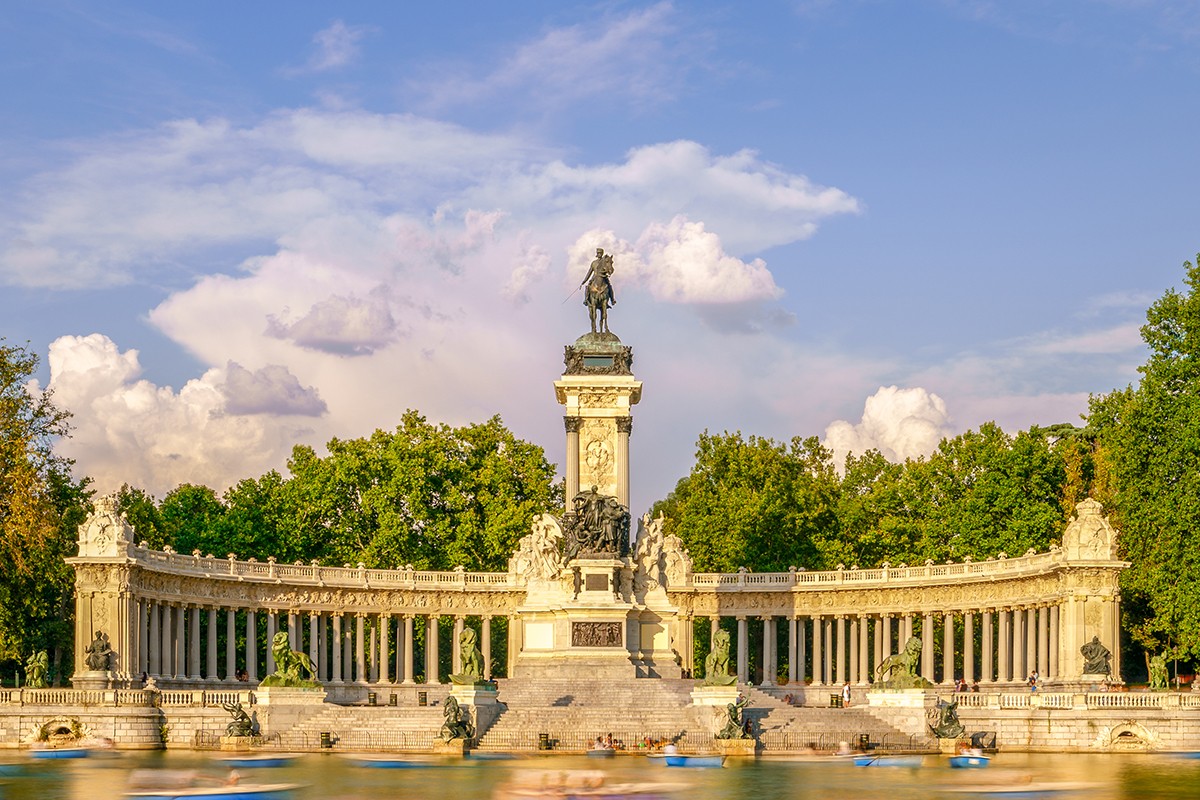
I’ll start with the capital, and somewhere that I experienced first-hand last winter.
Madrid in winter is warmer than northern Europe – I walked around wearing a coat in February, but no extra winter woollies were needed and I often found myself too hot. That being said, winter isn’t its finest weather – it was a bit grey during my stay in the city. Nighttime lows are around 3°C and highs are up to 12°C.
However, many of Madrid’s attractions are deeper than surface level, and to me, it really didn’t matter that it was a little bit grey. A Madrid walking tour details the entire history of the city, which is fascinating, and I also recommend a Spanish inquisition tour to learn more about this brutal period of history.
There are plenty of museums to visit in Madrid, and if you do have a sunny day, Retiro Park is lovely for a stroll. And then, of course, Spanish tapas and wine can be enjoyed year-round!
Most attractions in Madrid can be enjoyed in the winter just as much as the summer – and you have the added benefit of it not being sweltering hot for sightseeing!
Barcelona

If you’re searching for a winter getaway in Europe, look no further than Barcelona! The city has very mild weather in winter with temperatures ranging between 8-15°C, which is perfect for sightseeing. Since rain is not common during the winter months and most of the tourist crowds have already left, it’s easy to see why Barcelona is one of the best places to visit in Spain in winter!
The Basilica de la Sagrada Familia is one of the most famous landmarks in Barcelona, designed by Antonio Gaudí. Although the basilica is still unfinished, it’s possible to visit it, but due to its popularity, you should buy a ticket well in advance (even in winter, this is one of the most popular attractions in Europe). You can find many other amazing Gaudí buildings in Barcelona, such as Casa Batlló, Casa Milá and Parc Güell. If you have time, it’s worth seeing them all!
No visit to Barcelona is complete without strolling on Las Ramblas and visiting the Gothic Quarter. Apart from the famous sights, the local food is also one of the highlights of Barcelona. Having a delicious paella or some tapas with a glass of sangria is one of the best ways you can finish your day! 3 days in Barcelona is enough to see the main sights, but you can easily spend weeks in the city without getting bored.
By Krisztina from She Wanders Abroad
Granada
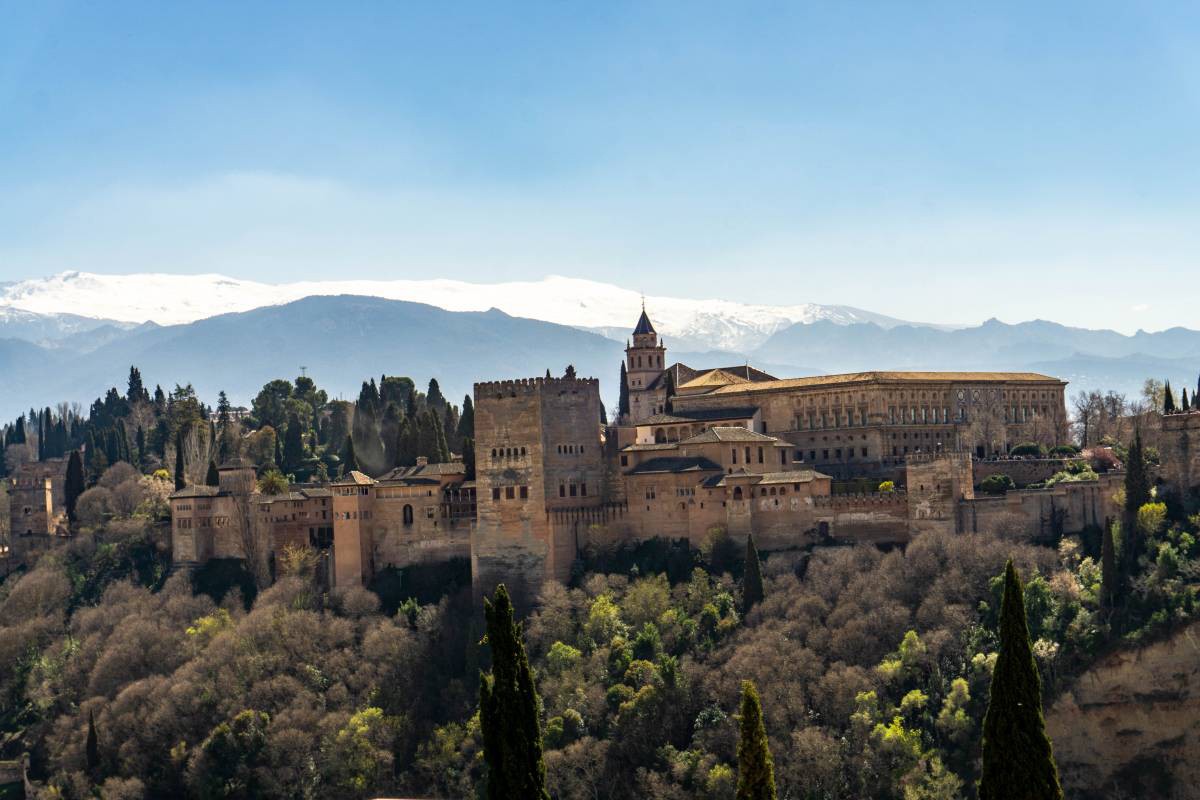
One of the best places to visit in Spain during the cooler winter months is the city of Granada located in the Andalusía region of the country.
Perfect as a standalone city break or as part of a longer trip through Southern Spain, Granada experiences high temperatures of around 13°C in December to February and low temperatures of around 3°C. This means that it’s quite pleasant to be out and about during the day, particularly compared with other destinations in Spain!
Granada is a great place to visit year-round with its unique tapas culture, the spectacular Alhambra complex, the cave houses and flamenco culture of Sacromonte and the incredibly interesting Moorish history, especially in the Albaicin – the historic Arab quarter.
During the winter months, you can combine a trip to Granada with skiing or other winter sports in the nearby Sierra Nevada Mountains or enjoy some of the Christmas markets that take place in the city.
Visiting in winter also means that some of the popular attractions like the Alhambra are not as busy as during the summer months and you are able to enjoy them with fewer people around.
Don’t forget to check out some of the coolest hotels in Granada when you’re booking your trip!
By Michael from The World Was Here First
Seville

Seville is the sunny capital of Andalusía, and one of the best spots to enjoy winter in Spain. Seville is amongst the warmest cities in Spain, and even in Europe during winter, with average temperatures ranging from 8°C – 17°C. Christmas is still very much celebrated here – so it’s a great city to enjoy festive vibes if you want to escape the cold weather!
When in Seville, don’t miss Plaza de España, an incredibly picturesque square. The beautiful bridges and ceramic tiles inside this square are absolutely captivating, and you can easily take hundreds of photos of the area. I recommend using some wide-angle lenses to get the best results – such as these lenses for Sony A6400.
During your time in Seville, don’t forget to visit the Royal Alcázar, the historic Seville Cathedral, and the Giralda Tower. You’ll also see lots of gorgeous festive lights in the streets surrounding these landmarks! The Feria del Belén de Sevilla is another place not to be missed — it’s the biggest Christmas market in town, and an excellent place to learn about the local culture and traditions.
Lastly, if you visit in December, be sure to catch the magnificent Christmas concert performed by the Royal Orchestra of Seville and the Christmas parades in the city centre organized by the Royal Postmen (Reales Carteros)!
By Jiayi from The Diary of a Nomad
Sierra Nevada
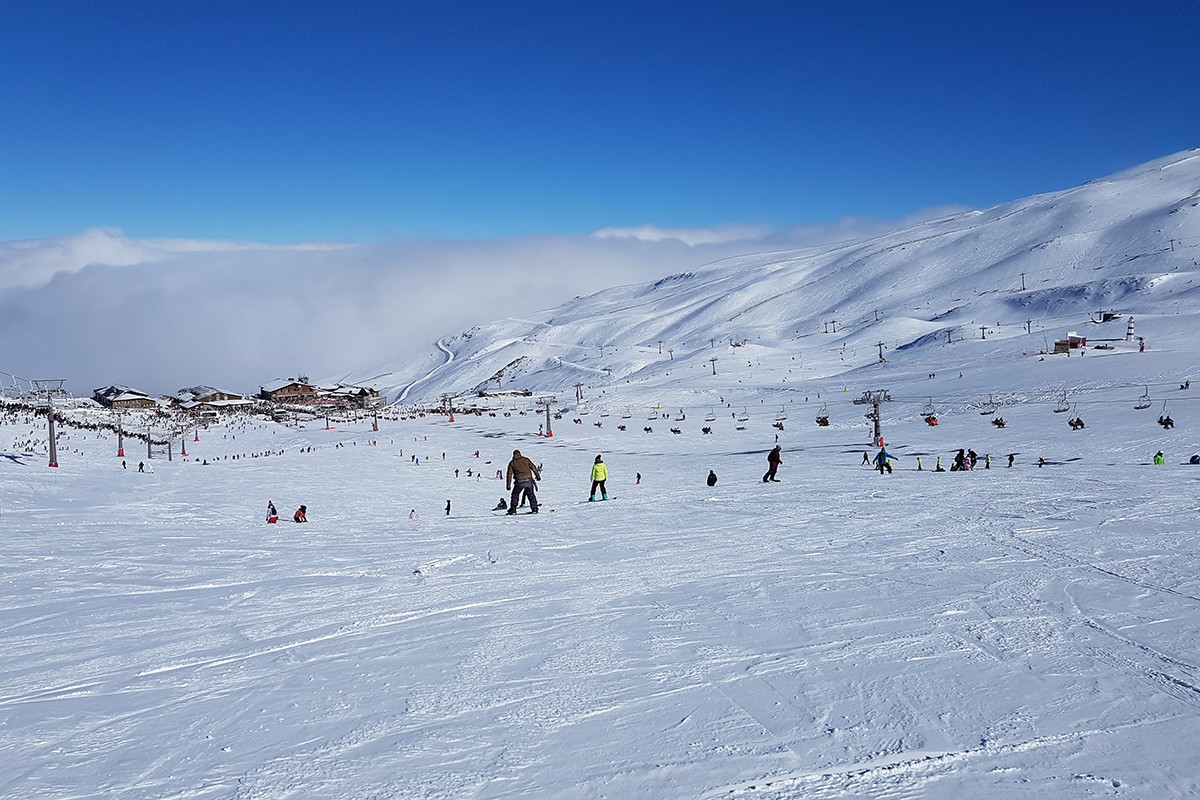
The Sierra Nevada is one of the ultimate places for winter in Spain, especially if you like a snowy winter. Home to the most southerly ski slopes on the continent, it’s popular among travellers and locals from southern Spain who visit to spend the weekends on the skiing slopes.
You’ll find some of the highest peaks in Spain here, and one ski lift goes almost to the top of the 2nd highest in the National Park (and 4th highest in Spain), Pico de Veleta (3398m). From there you can see over to Mulhacen, which is the highest peak in the Iberian Peninsula.
The village of Sierra Nevada is the perfect winter paradise with snow, restaurants, and mesmerizing views. No matter where you stay in the village you can walk around. It’s also a great base for a day trip to Granada – which we’ve got down as another Spain in winter destination!
Average temperatures in the Sierra Nevada are between 3 and 7°C, and sometimes you can see people skiing in t-shirts on sunny days.
By Linn from Andalucia Hiking
Malaga
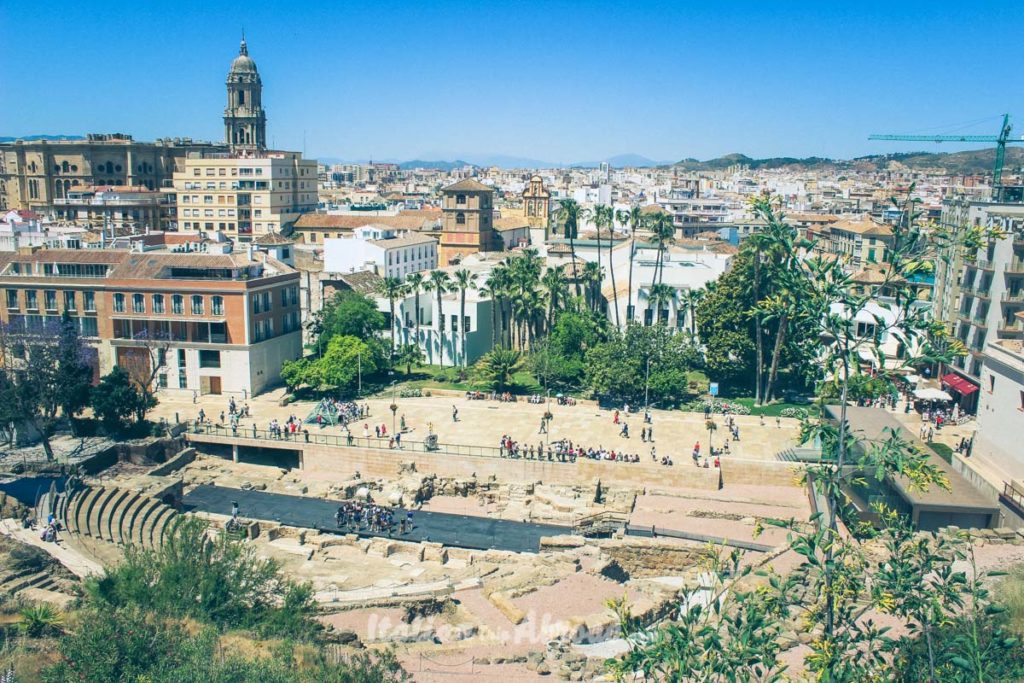
While much of Europe freezes, Malaga in the Andalusía region is the ideal Spanish city to chase the sun. With average temperatures about 18-20°C from November to February, you’ll be able to avoid winter here!
During the cold months, the sun warms up the city a lot and mitigates the temperature thanks to the sea breeze. Malaga gets over 300 days of sun per year, with not much rainfall. The coldest and relatively wettest months are January and February.
The warm weather makes Malaga perfect for a winter escape, but this isn’t the only appeal. In Spain, Christmas traditions are really important; Malaga city centre transforms over the festive period, with glam lights adorning all the streets. Enjoy the shopping in Calle Larios, the main street full of boutiques and cosy cafes. The Christmas markets in the city centre create the festive vibes and the concerts all around the squares entertain people while shopping.
If you want to visit Malaga in winter, you’ll also be able to enjoy a fantastic New Year’s Eve celebration. In Spain, it is tradition to eat 12 grapes, one for each chime of the midnight bells, to bring good luck for the next year. There is no better place where to celebrate it than Plaza de la Constitución.
Malaga could be the best sun destination in Europe for those who want to run away from the cold winter but stay in Europe. You can even enjoy the beaches and seaport over winter – or wait till March for an early swim in the Mediterranean Sea.
By Alessia and Toti from Italian Trip Abroad
Marbella

The lively town of Marbella in Southern Spain is the perfect place to enjoy a warm winter break. During these months, Marbella’s daily temperatures range from around 17 to 23°C. This weather is certainly warm enough for some of the many activities on offer in and around Marbella!
Golfing is highly popular, but there are excellent hiking trails near the town, as well as opportunities to sail, play tennis or enjoy relaxing walks along the beach.
The nightlife is quieter than in the peak summer months, but each evening the charming 15th century Castilian Square in the heart of the Old Town still comes to life with local musicians and the chatter of other diners. The square, called Plaza de los Naranjos, is also the perfect place to catch early morning rays over fresh orange juice and hot churros.
The Old Town, known in Spanish as Casco Antiguo, is made up of tiny laneways, and there’s some fantastic boutique shopping on offer. The buildings are all traditional Moorish architecture and many of covered in tumbling bougainvillaea.
In Marbella, the tourists disappear in the winter, but it becomes somewhat of a digital nomad hub, with lots of people from Northern Europe working online jobs abroad!
Marbella is perfectly positioned to explore other areas in Andalusía too, from the white-washed villages in the hills to the Sierra Nevada mountain range. In fact, you could spend the morning skiing there, before heading back to Marbella for the afternoon to catch some rays!
By Claire from Stoked to Travel
Cadiz
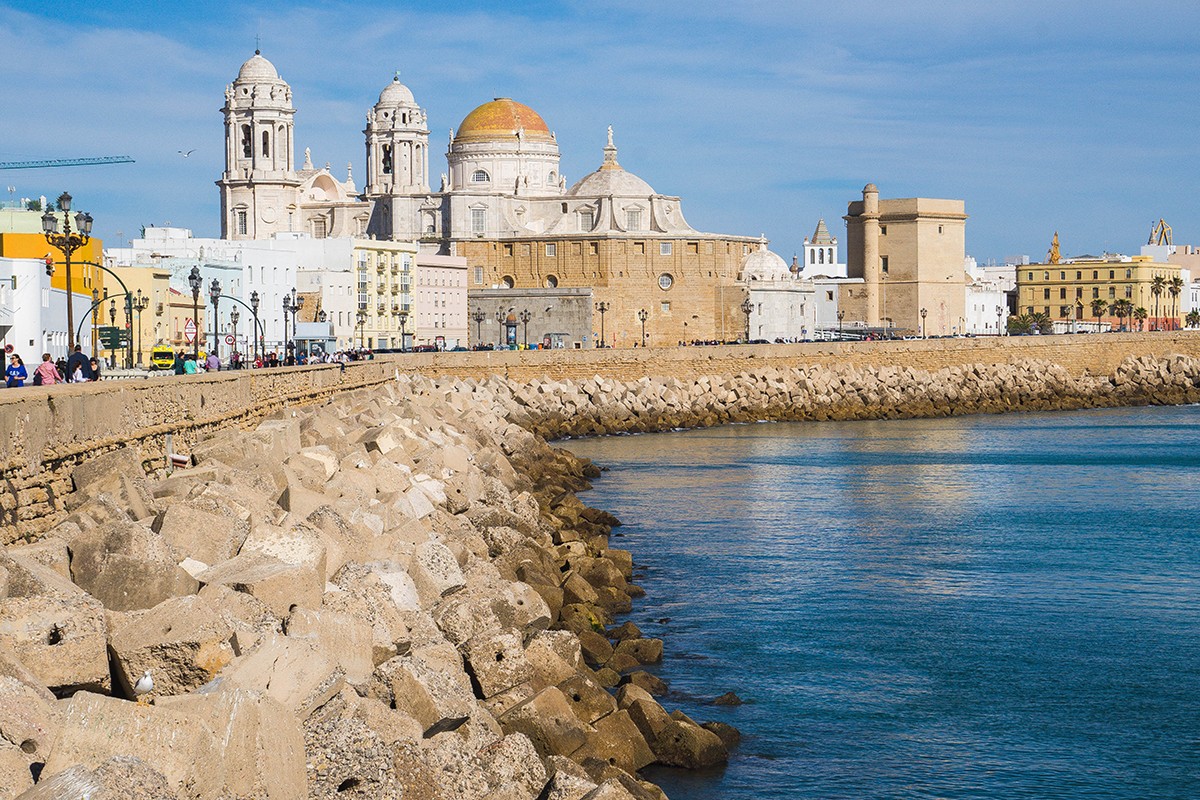
One of the best cities to visit during winter in Spain is the city of Cadiz, which has 300 sunny days a year on average. With temperatures staying above 10 degrees in winter (minimum of 10°C in January and maximum of 16-17 °C in all the other winter months), Cadiz is a great place to get some winter sun.
Cadiz is a historical town, the oldest attested in Europe, born in the 8th century BC. However, its spirit is very young. The best place to experience the buzz of the town is in the fish market where, in the morning, you can go and buy fresh fish and seafood at very competitive prices. At lunchtime, the same fish is cooked and served at the tapas bars and restaurants adjacent to the market. This makes it one of the prime spots to not only enjoy probably the best fish dishes in Cadiz, but also to interact with the locals.
Whilst Christmas markets are not that popular in the south of Spain, it is worth visiting Cadiz in winter for the annual carnival, which is considered to be the second-best in the world after Rio. Held in the second half of February, the celebration lasts for a week. During this time the city’s streets are filled with performers, parades, excellent street food and enthralling firework displays.
By Joanna from Andalucia in my Pocket
Alicante
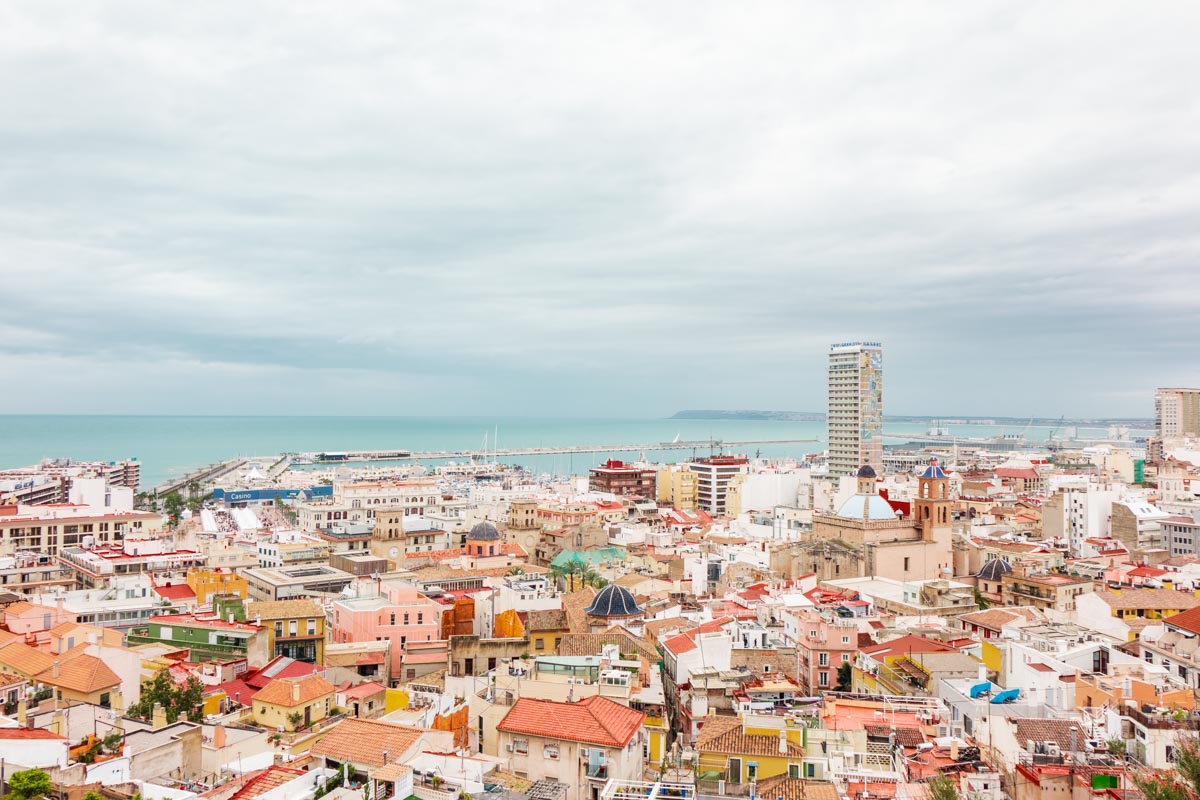
If you want to spend your winter in the Spanish sun, consider visiting Alicante.
This Mediterranean city nestled in the southeast of the Iberian Peninsula boasts 3,000 hours of sun each year with an average temperature rarely dropping below 18°C.
There are plenty of things to do in Alicante as the town is rich in history, has gorgeous sandy beaches to have a relaxing walk along the coastline, and get lost in its colourful streets.
The main attraction of Alicante is the Castle of Santa Barbara, which overlooks the sea and part of the town. Santa Cruz is a little neighbourhood adjoining the castle featuring white-coloured houses with colourful doors, balconies, and windows. You can also find many notable cathedrals, churches, and a couple of museums too.
Moreover, the perfect location of Alicante enables you to explore the charming little villages and towns in the Costa Blanca region, including the famous Benidorm, Altea, Villajoyosa, and Torrevieja, to name a few. Travelling to those towns is possible via a tram offering splendid views of the region.
By Baia from Red Fedora Diary
Valencia

If you want to get into the festive spirit with a winter getaway but don’t fancy the freezing temperatures of places like Germany and Scandinavia, you might prefer a trip to the Spanish city of Valencia.
Christmas markets and winter illuminations still light up the city, but with daytime temperatures averaging somewhere between 10-15°C, you won’t have to wrap up quite so much. Take time to enjoy festive treats like turrón and roscón de reyes (king’s cake) or while away the hours in one of the city’s chic tapas and wine bars.
When you’re not inside eating delicious dishes, explore Valencia City Hall, La Lonja de la Seda, the City of Arts and Science, and Valencia Cathedral, or head to the annual Christmas funfair and circus.
Valencia is also renowned for throwing some pretty spectacular festivals in winter including The Three Kings Parade. This is held on the 5th of January in the evening each year. There’s also the San Vincente Mártir Festival on the morning of the 22nd of January.
Another great thing about visiting Valencia in winter is that there is hardly any rainfall. So, while it’s worth packing an umbrella just in case, it’s unlikely you’ll need it as there’s only an average of 10mm of rainfall per month throughout the whole of winter!
By Chrysoula from Travel Passionate
Baqueira Beret

Spain may not automatically spring to mind when you think of skiing in Europe. However, Spain’s premier resort, Baqueira Beret, can hold its own against any of the big ski resorts in the French Alps – making it one of the best places to visit in Spain in winter. As an additional bonus, skiing in Baqueira Beret is so much cheaper than the Alps. The resort is snow sure, and they have snowmaking facilities as well. There are definitely more skiers than snowboarders which is a plus for the skiers!
Located in the Spanish Pyrenees, Baqueira Beret attracts a well-heeled crowd from Barcelona and Madrid – the Spanish royals have a chalet in the resort! There are a handful of family-friendly hotels entered around the main ski lift area. Spanish speakers mostly populate the resort, but everyone working in the bars, hotels, restaurants and schools will speak excellent English.
The ski runs are best suited for intermediate skiing as there are only a handful of easy and advanced runs. Advanced skiers also have a wide range of heliski options. If you want some lessons, the Baqueira British ski school can provide them in English.
The hotels and the entire vibe is family-friendly. The Spanish generally sleep in in the mornings, so there is no jostling for space on the first ski runs like in the Alps. At our hotel, children’s dinner was set for 8pm and adult dining started at 10 pm. Needless to say, we were one of the earliest adult diners in the resort!
The nearest airport is either Barcelona or Toulouse in France. From Toulouse, the resort is an easy 2 hour drive into the Pyrenees mountains.
By Shobha from Just Go Places
San Sebastian

San Sebastian is an underrated place to visit in Spain during winter. The city is close to the French border and has some of the best scenery in the country! It also has some of the most beautiful weather during the winter months.
Although it may not be as warm as Andalusía, the average temperature is a reasonable 13°C. When I visited in December 2016, I was treated to 20-degree weather, which more like a summer’s day than the middle of winter!
When you visit San Sebastian, you’ll find there are lots of things to do. With high average temperatures, it’s worth checking out the beaches here. Yes, there are two! La Concha bay is the scenic beach with incredible views out into the Bay of Biscay, while Playa Zurriola is the surf beach.
To get a fantastic vista of La Concha and the city as a whole, a hike to the top of Monte Igeldo is well worth it. You’ll also find a 19th-century amusement park at the top too!
You can’t leave San Sebastian without trying the food here either. The city has the highest proportion of Michelin starred restaurants in the world! While they might be too expensive for most, the pintxos in most bars and cafes are reasonably priced and delicious!
By Tom from The Travelling Tom
Mallorca

Without the summer crowds, the island of Mallorca (Majorca), Spain is a perfect place to spend a stress-free winter holiday with family or friends. Palma, the capital city, comes alive with decorated streets and festivals during each winter holiday. Stroll Passeig del Born for the most impressive sights.
The average winter temperatures hover around 16°C. While it’s cool in the winter months, the brilliant Mallorcan sunshine still makes it feel quite pleasant. You could rent a car to take in the magnificent natural beauty of the mountains and coastline – the beaches are especially spectacular when you have them all to yourself.
Base in Palma to be close to everything or rent a historic villa in one of the charming villages to feel like a local – you’ll have a lot more choice in the winter. Valldemosa, with flower boxes lining its cobbled streets, is a favourite. If you’re here at the end of winter, the beginning of Lent brings parades in many small villages with live music, festive dress, and street parties.
The almond trees that dot Mallorca start blooming at the end of January. Pink, white and rose blossoms turn the island into a stunning kaleidoscope of colour. And the traditional Mallorcan almond cake is to die for!
By Karen from Outdoor Adventure Sampler
Ibiza

Ibiza located off the eastern coast of mainland Spain in the Balearic islands group. It’s famous for being a party place, but there are plenty of other things to do here – especially during the winter!
Winter temperatures in Ibiza vary from averages of 16°C in January and February to 20°C in April and November – perfect weather for exploring! There are fewer tourists in Ibiza in winter, and you can take advantage of no crowds to experience the traditional Ibizan culture.
Ibiza old town is a UNESCO world heritage site that includes the winding shopping streets of the old town and 16th-century walls built to protect Ibiza from pirates long ago. At the top of Dalt Vila, you’ll have panoramic views across Ibiza town towards Formentera island.
One of the best things to do in Ibiza during the winter is to take long walks along the beaches. During winter the sunbeds are removed, and the beach is flattened ready for the next tourist season. Locals come and walk their dogs along the beach – you can act like a local and join them!
The weather is still warm enough for a sit down to admire the views out to sea as well as the picturesque beaches. The best beach for a walk during winter is Cala Gracio although the beaches of Santa Eulalia and San Antonio are also wonderful.
By Sylvie from Travels with Eden
Lanzarote
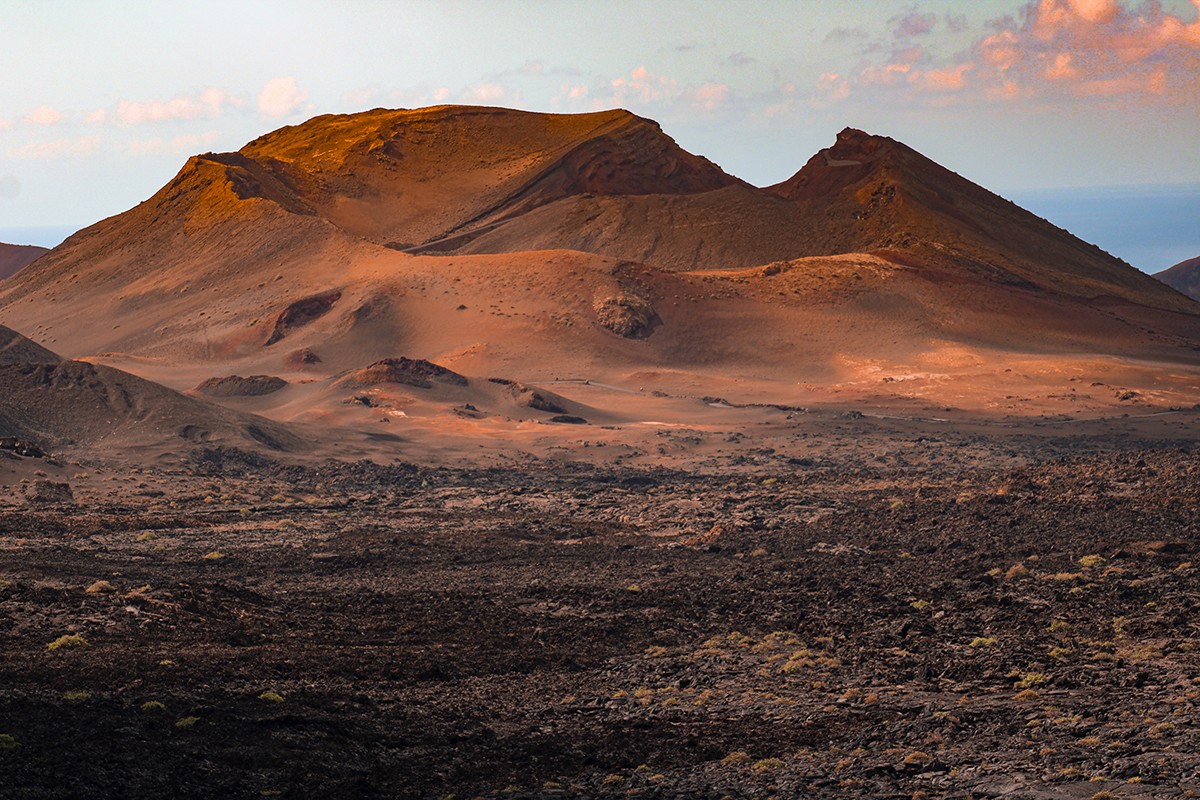
One of the best places to visit during winter in Spain is the island of Lanzarote in the Canary Islands. Renowned for its package tourism, the island is starting to change and is also beginning to attract adventurous travellers who venture there independently to gawk over the volcanic landscapes, mild weather, and delightful beaches.
Lanzarote is fantastic in winter, as it is the off-season but still somewhat warm. The average temperature during winter hovers around 20°C and while the average rainy days for this time of year are few and far between, the weather passes over the island rapidly and can bring very short rain showers throughout the day for mere minutes at a time.
Almost everything is open during the winter months, with the exception of some of the restaurants that will take a month or two off to recharge for the peak season.
Some of the best things to do in Lanzarote in winter are marvel at the volcanic, otherworldly landscapes of Timanfaya National Park, learn more about the island’s most famous resident (Cesar Manrique) and his life, and go to the Saborea Lanzarote Wine and Gastro Festival. You could also book a trip to nearby La Graciosa, the newest island in the Canaries!
There is something for everyone in Lanzarote and winter is the perfect time to experience it without the crowds and higher prices.
By Megan from Megan Starr
Tenerife
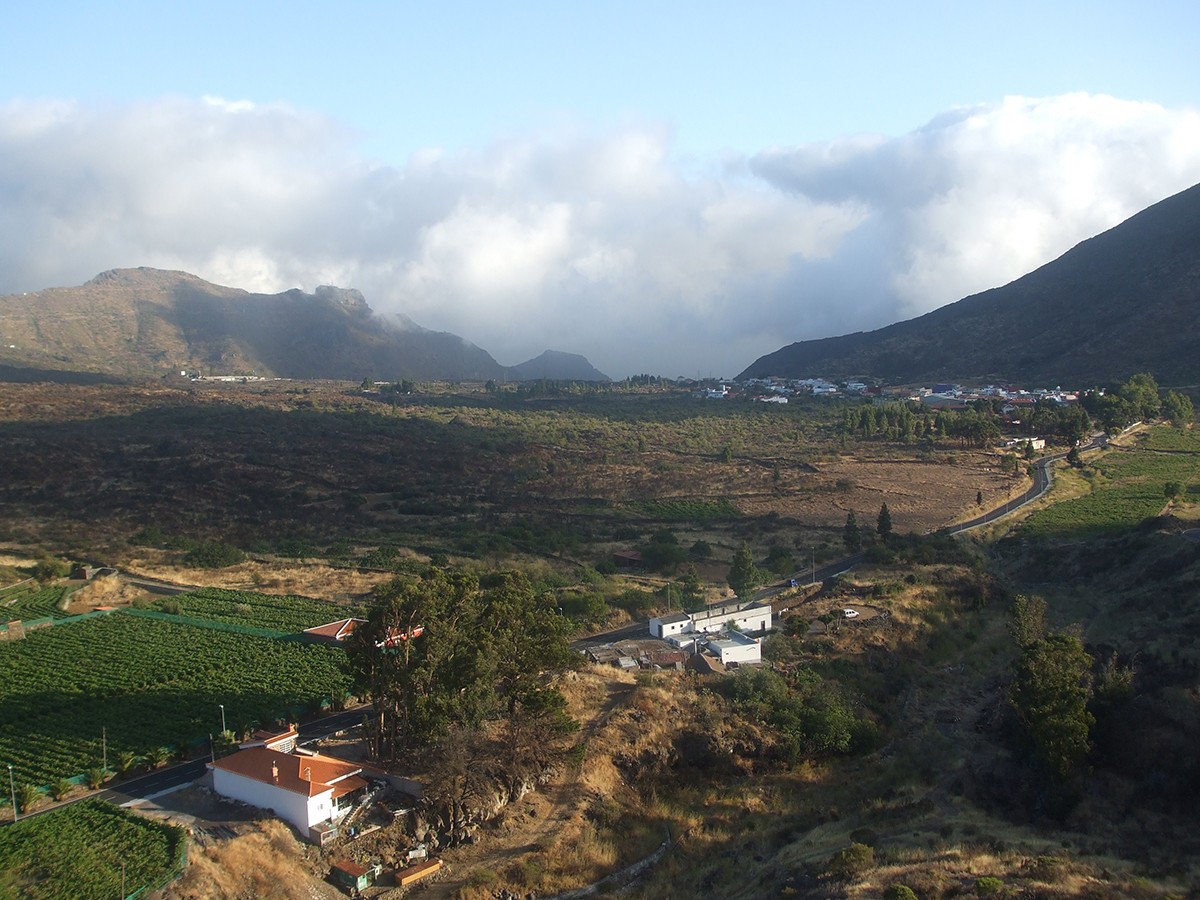
Tenerife in the Canary Islands is the ideal island destination for some winter sun. Tenerife has year-round sunshine with the temperature in winter staying around 20°C during the day. At night, the temperature drops to around 15°C, so you may need a light jacket especially by the coast.
Tenerife has many exciting things to do – it’s not all about the yellow and black sand beaches, even though they are spectacular! You can find tours for whale watching, jeep tours of Mount Teide, snorkelling with turtles or even scuba diving at one of the many dive sites on Tenerife. One awesome activity that requires pre-planning is getting the cable car to the summit of Mount Teide. This requires a permit as they only allow so many visitors per year.
Options for eating out are extensive and you can find restaurants to suit any taste, from traditional Spanish to Italian, Chinese and English cuisine. Many local restaurants offer a menu del dia which is excellent value for money. It includes three courses with tasty local dishes like tapas and paella, and some even include a free glass of wine.
The best way to get around on Tenerife is to rent a car as taxis can be expensive. Having your own wheels is a great way to see the island and its quaint mountainside villages.
By Steph and Lewis from Book It Let’s Go!
La Gomera

La Gomera is the second smallest Canary Island and is also named the island of the eternal spring. The temperatures are mild year-round, varying between 25C in August and 20C in January.
The winter months on La Gomera know lots of sunny days, however, when temperatures can easily rise to 23C. It’s lovely and mild, the perfect climate for an active day out and a long Spanish lunch on a terrace overlooking the sea. Another reason why La Gomera is such a great destination is that there’s no real mass tourism, the towns are authentic and quaint, the nature is stunning and the beaches are rugged and relaxed.
La Gomera is the perfect holiday destination for nature lovers as the island is home to the Garajonay national park, which is on the UNESCO World Heritage list and hosts the oldest natural forests in the world. When you see all the amazing flowers in full bloom, even in December and January, you’ll understand why La Gomera is called the island of the eternal spring. Don’t forget to visit the island’s capital, San Sebastian, with its authentic restaurants, quaint streets and lovely little church. Or drive to Valle Gran Rey for some fantastic mountain and sea views.
By Esther from Vakantie Karpathos
Gran Canaria

Gran Canaria is one of the seven main Canary Islands that are part of Spain, located in the Atlantic Ocean 840 miles off mainland Europe and only 62 miles off African Coast. Due to its proximity to the tropics, the island enjoys more than 320 sunny days, so Gran Canaria is a great choice of destination all through the year.
When most of Europe freezes in winter, Gran Canaria becomes a saviour for holidaymakers. The temperature of Gran Canaria in winter is still up an average of 22 degrees!
Gran Canaria is a miniature continent in itself. Picture yourself in Gran Canaria, and you can contemplate desert-style sand dunes, volcanic landscapes, whitewashed villages, stunning mountains and cliffs, dense forests and not to forget their azure blue flag beaches.
One of the best attractions in Gran Canaria is the famous Maspalomas dunes. Also, catch a glimpse of sunset near Faro de Maspalomas, a 19th century lighthouse and a distinctive landmark that sits next to the sand dunes.
Winter is a great time for hiking in Gran Canaria – one of the best spots that you can hike to is perhaps Roque Nublo. There’s also the photogenic Puerto de Morgan, and the mountain village of Fataga!
By Anuradha from Country Hopping Couple
Whether you want to laze on beaches or go for a ski, there’s something for everyone in Spain in winter! These destinations are all fairly easy to reach from airports in Europe. Don’t wait for summer to travel Spain – winter in Spain is just as incredible!
Pin it for later!


